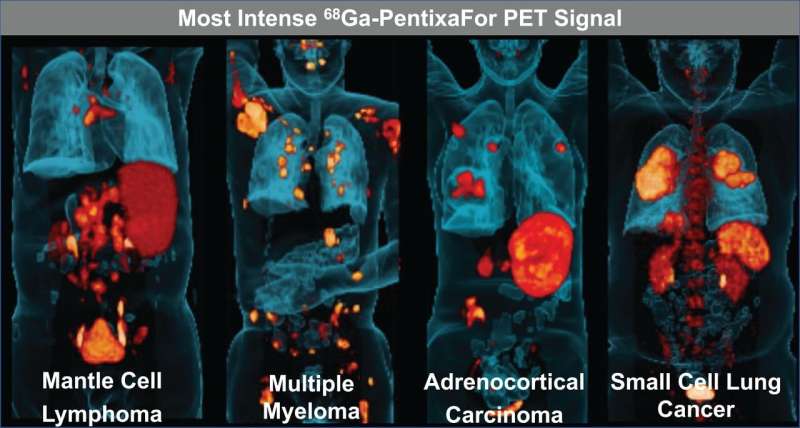Novel PET agent effectively detects multiple cancers, identifies patients for targeted therapies

A new molecular imaging radiotracer can precisely diagnose a variety of cancers, providing a roadmap to identify patients who may benefit from targeted radionuclide therapies. In the largest medical study of its kind, researchers found that 68Ga-PentixaFor demonstrated high image contrast in hematologic malignancies, small cell lung cancer, and adrenocortical neoplasms.
This research was published in the November issue of the Journal of Nuclear Medicine.
The imaging agent 68Ga-PentixaFor is used to detect the C-X-C motif chemokine receptor 4 (CXCR4). Chemokine receptor expression is a predictor of poor prognosis in cancer patients, as it promotes the growth of malignant cells and inhibits anti-tumor response.
"Knowing which cancers have increased CXCR4 expression can significantly impact clinical tumor staging and, subsequently, affect patient management and treatment decisions," said Andreas Buck, director of the department of nuclear medicine at University Hospital Würzburg in Würzburg, Germany.
"68Ga-PentixaFor PET is of particular interest because it offers improved lesion detection rates over other imaging modalities, such as MRI, CT, and even FDG PET."
In the study, researchers assessed 68Ga-PentixaFor uptake and image contrast to determine the most relevant clinical applications of CXCR4-directed imaging. Two study sites performed 68Ga-PentixaFor PET on 690 patients with 35 different types of cancer. Images were interpreted and statistical analyses performed.
Very high tracer uptake was found in patients with multiple myeloma, adrenocortical carcinoma, mantle cell lymphoma, adrenocortical adenoma, and small cell lung cancer. Comparable results were recorded for image contrast.
"These results suggest clinical scenarios in which 68Ga-PentixaFor PET may prove beneficial for directing CXCR4-targeted therapies," said Buck. "This is of particular importance for malignancies that lack a more suitable imaging modality. A pivotal phase III study is planned to continue this research in the second quarter of 2023."
More information: Andreas K. Buck et al, Imaging of C-X-C Motif Chemokine Receptor 4 Expression in 690 Patients with Solid or Hematologic Neoplasms using 68Ga-PentixaFor PET, Journal of Nuclear Medicine (2022). DOI: 10.2967/jnumed.121.263693





















